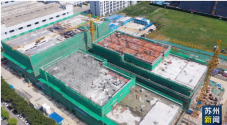I guess a lot of the information posted by this post already have been covered in this thread since 2021.
China's semiconductor manufacturing industry has made rapid breakthroughs in all directions
When the product director of the 28nm node lithography machine held a meeting in the first half of last year, the project approval indicated that it was uncertain when the delay would be, because everyone was not confident in the completion of the product.
Then the product was released suddenly, and many people in the company didn't know about it, and the secrecy was done very well. What links did it break through? It is mainly due to the shifting nature of the transmission, the acceleration of the moving platform, and the stability of the light in the objective lens system. When the light shines on the silicon circle, it has been difficult to present a complete pattern, and the compatibility of the product. The original failure will occur after a few hours of running, fail the reliability test. Such a quick realization is due to the fact that the tolerances between the products have just been adjusted by the project personnel. The company is currently preparing to start assembling the second unit. Many things have been changed in the first unit, including several core components. The first one is to cross the river by feeling the stones, but I am going to find the real reason through the second one. At present, it is difficult to judge the performance of this 28nm lithography machine. The company only needs to pass a wafer and run the graphics. However, it is completely different to run the customer's product on site for long-term use and short-term test. In the past few years of sanctions against semiconductors in the United States, the result is that domestic equipment will grow wildly in 2022, and the profits will be very gratifying. Yandong Micro is the first to create a nationally produced wafer production line. The company plans to raise 4 billion yuan, of which 3 billion yuan will be used for the 12-inch integrated circuit market line project based on a complete set of domestic equipment, and the remaining 1 billion yuan will be used to replenish liquidity.
After the project is completed and put into production, the monthly production capacity will reach 40,000 pieces, and the process node is 65 nanometers. The product positioning is high-density power devices, display driver ICs, power management ICs, and silicon photonics chips.
The manufacturing of the double workpiece table is extremely difficult, and the silicon wafer table is in constant motion 7*24 hours. Take Huazhuo Jingke’s DWSi submerged double workpiece table technical parameters as an example: when the wafer table moves at a
speed of 1.5 m/s, the displacement deviation does not exceed 5 nanometers, which is about one ten-thousandth of a hair. Sophisticated measuring instruments are required to achieve this.
For the four DWS dry-type double worktables delivered by Huazhuo Jingke in 2021, the measurement system will also be purchased from the old and beautiful Zygo company, and there is indeed a risk of being stuck.
This time, Harbin Institute of Technology's "high-speed ultra-precision laser interferometer" won the gold medal of the first "Golden Sui Award" of the Chinese Optical Engineering Society, and it was also the first place, successfully solving this problem.

Wen Xiaojun, director of CCID Research Institute, said that domestic 14nm chips will be mass-produced by the end of 2022, and the rapid development of localization of 14nm and even 28nm chips means that we adopt a return strategy and use mature technology to meet general chip needs instead of blindly pursuing high-quality chips. For the manufacturing process, more emphasis is placed on design and packaging optimization, and time is exchanged for semiconductor applications and independent space for the entire industry chain.
The development of 14nm chips has overcome many technical problems: key equipment such as etching machines and thin film deposition have been developed from scratch, and are applied in batches on large production lines; breakthroughs have been made in the research and development of 14nm processes; mass production has been fully realized in the subsequent packaging and integration technology achievements ; Hundreds of key materials such as polishing agents and sputtering targets have passed the assessment of large production lines and entered mass sales. These achievements have basically covered the entire industrial chain system of China's integrated circuits, reversing the passive situation of the previous introduction of a complete set of process technologies.
Zhongke Keyi Company has developed two major coating equipment: linear Lloyd lens coating device and nano focusing mirror coating device, and it has been officially put into use on June 28, 2022. A good coating process can control the reflection, filtering, polarization and other requirements of optical parts to light. The lens of a lithography machine has very high requirements for optical coatings. The smoothness of the mirror surface of an EUV lithography machine lens must not exceed 0.05 nanometers. At present, the only lens coating manufacturer that can meet the requirements is Zeiss. The coating equipment launched by Zhongke Keyi this time is the vacuum coating with the most difficult process at present. Although it has not yet reached the level of Zeiss, it can also control the accuracy of the film thickness within 0.1 nanometers. More importantly, the All the technology of the equipment is completely in the hands of our country. The emergence of this coating equipment will allow our country to go a step further in the development of EUV lithography machines.
As we all know, the light source, double workpiece table, and objective lens are the three core systems of the lithography machine.
In terms of double workpiece tables, Huazhuo Jingke has a team led by Zhu Yu. Although the technology and solutions were relatively backward when China first started to develop double workpiece tables, it was found that ASML developed a magnetic levitation planar motor solution After installing the double workpiece table, the team switched to the latest solution.
Harbin Institute of Technology has successfully developed a high-speed ultra-precision laser interferometer, which can be used for the integrated development and performance testing of 350nm to 28nm lithography prototypes In the face of the technology blockade by the United States, the focus of China's semiconductor breakthroughs in the next three years will be on usability (establishing A-line production capacity at 135-28nm), while chip packaging is based on 28nm, and the equivalent 14/7nm performance will be established in the fields of base stations, servers, and smart cars , sacrificing a certain size and power consumption.
Yandong Micro’s 12-inch integrated circuit production line project based on a complete set of domestic equipment has a planned monthly production capacity of 40,000 pieces and a process node of 65nm. Trial production will begin in April 2023, and the product will reach production in July 2024. The second phase is expected to be completed in 2024.





